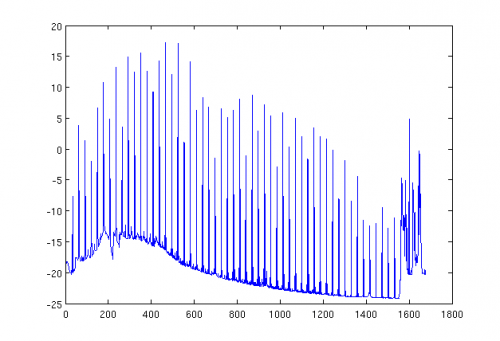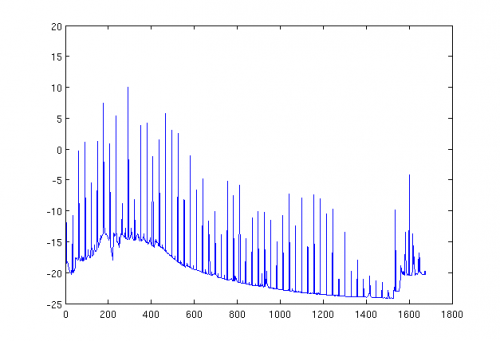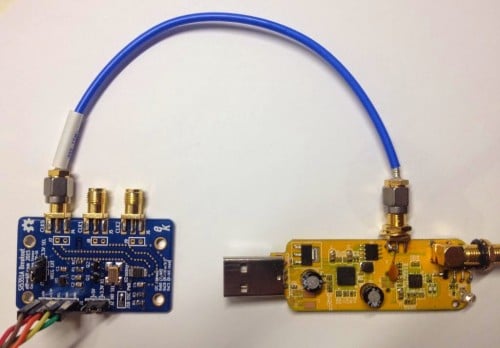Adding a Low Pass Filter to an External Local Oscillator Source for the RTL-SDR
At the end of last month we posted about Milan’s work on using an Si535A voltage controlled oscillator with breakout board as a stable replacement for the default RTL-SDR’s low quality 28.8 MHz local oscillator.
Now in order to reduce the number of spurious signals produced at multiples of 28.8 MHz by the external local oscillator, Milan has added a simple low pass filter to the oscillator output. He used a 3-pole Butterworth filter with a 30 MHz cut off point. This filter acts to the convert the Si535A’s square wave output into a sine wave, which should help reduce the number of spurious signals produced.
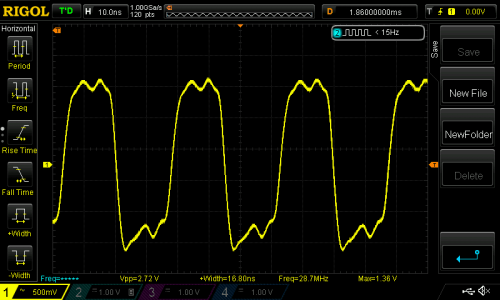
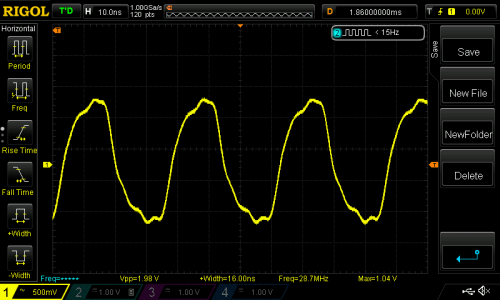
Milan tested his filtering by creating a wideband comparison sweep with rtl_power. With the low pass oscillator inserted, the spurious signals were clearly reduced a significant amount. Then by reducing the drive level from 8mA to 2mA, the spurious signals were reduced even more. By using a filter with more poles it’s possible that the spurious signals could be reduced even further.
